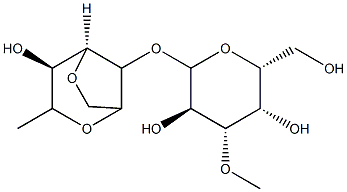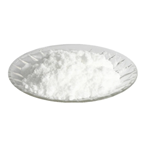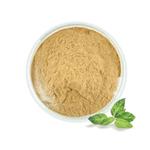Agar Biosynthesis in Red Algae: From Monomers to Polysaccharides
May 8,2024
General Description
Agar is a composite substance derived from red algae, primarily composed of galactose-based monomers. The biosynthetic pathway involves enzymatic pathways for the synthesis of UDP-D-galactose and GDP-L-galactose, which are then transported to the Golgi apparatus for polymerization into polysaccharide chains. The formation of agar polysaccharide involves the establishment of strong glycosidic bonds, facilitated by galactosyltransferases. Various glycosidase enzymes are responsible for hydrolyzing these bonds. Agarose, the most recognized term, constitutes approximately 70% of agar's polysaccharide content and features repeated D-galactose and 3,6-anhydro-L-galactose units linked by β-1,3- and α-1,4-glycosidic bonds, respectively. Red algae species exhibit dynamic responses to environmental conditions, influencing agar biosynthesis.

Figure 1. Agar
Overview
Agar is a composite substance composed of gelling polysaccharides comprising both D- and L-galactose units. The terminology for red algal galactans is somewhat arbitrary, encompassing agarose, agaroids, agarans, and agaropectin, denoting various agar components with distinct conformations and side chain substitutions. Agarose, the most recognized term, denotes a neutral polysaccharide featuring repeated D-galactose and 3,6-anhydro-L-galactose units linked by β-1,3- and α-1,4-glycosidic bonds, respectively. This linear configuration constitutes approximately 70% of agar's polysaccharide content. Side chain substituents, such as sulfate ester, methoxyl groups, and pyruvate ketal, are present in the agar backbone, including alternating D- and L-galactose units, albeit to a lesser extent in agarose, thus diminishing agar's overall gelling properties. Notably, agar extracted from Gracilaria exhibits a higher degree of sulfation compared to Gelidium and Pterocladia, particularly at the C-6 of the 4-linked-L-galactose, leading to reduced gel strength. Enzymatic desulfation of L-galactose-6-sulfate to 3,6-anhydro-L-galactose facilitates the formation of a three-dimensional helical structure, thereby initiating gel formation. 1
Biosynthetic Pathway
Agar monomers
Agar, a gel-like substance derived from red algae, is primarily composed of galactose-based monomers. The biosynthesis of these monomers involves a series of enzymatic pathways, with two major types of galactose nucleotides playing key roles: uridine diphosphate (UDP)-D-galactose and guanosine diphosphate (GDP)-L-galactose. UDP-D-galactose is synthesized from glucose-6-phosphate via a pathway involving several enzymes. In the Leloir pathway, galactose-1-phosphate uridylyltransferase (GALT) catalyzes the formation of UDP-galactose from UDP-glucose and galactose-1-phosphate. This pathway, common in bacteria, algae, and animals, is notably absent in most plants. GDP-L-galactose is produced from mannose-1-phosphate via GDP-mannose pyrophosphorylase (GMP), which catalyzes the conversion of mannose-1-phosphate and guanosine triphosphate (GTP) to GDP-mannose and pyrophosphate. Following this step, GDP-mannose-3',5'-epimerase (GME) converts GDP-mannose into GDP-L-galactose and GDP-L-glucose. These key enzymes and genes have been cloned and characterized in various agarophytes, particularly those within the Gracilariaceae family. Additionally, an alternative pathway for agar biosynthesis involves the degradation of floridean starch into glucose-1-phosphate, which subsequently contributes to the production of both UDP-D-galactose and GDP-L-galactose. This intermediary pathway reflects the complex nature of carbohydrate metabolism in red algae, allowing for dynamic responses to environmental conditions, such as light and salinity, that can influence the biosynthesis of agar. 2
Polymerisation and formation of agar precursor
In the process of agar biosynthesis, after the synthesis of GDP-L-galactose and UDP-D-galactose in the cytosol, these galactose nucleotide sugars are transported to the Golgi apparatus via nucleotide sugar transporters (NSTs) embedded in the Golgi membrane. Within the Golgi apparatus, galactosyltransferases (GTs) facilitate the rapid assembly of these nucleotide sugars into polysaccharide chains. These GTs are strategically located close to NSTs to ensure efficient polymerization of the sugars. The formation of agar polysaccharide involves the establishment of strong glycosidic bonds between the nucleotide sugars. Various glycosidase enzymes with endo- and exo-modes of cleaving action are responsible for hydrolyzing these glycosidic bonds. At least two classes of GTs are essential for the glycosylation process and the formation of α-1,3 and β-1,4-galactopyranosyl linkages in agar polysaccharides. While molecular information on red algal galactosyltransferases and NSTs is still limited compared to higher plants, genomic analysis of species like Chondrus crispus has revealed the presence of numerous genes from GT families. Some of these genes show sequence homology to GTs involved in glycosaminoglycan biosynthesis in animals and hemicelluloses and pectin biosynthesis in plants. This suggests the potential involvement of these red algal GTs in galactan biosynthesis, although further experimental validation is required to confirm their specific roles. 2
Reference
1. Park SH, Lee CR, Hong SK. Implications of agar and agarase in industrial applications of sustainable marine biomass. Appl Microbiol Biotechnol. 2020; 104(7): 2815-2832.
2. Lee WK, Lim YY, Leow AT, Namasivayam P, Ong Abdullah J, Ho CL. Biosynthesis of agar in red seaweeds: A review [published correction appears in Carbohydr Polym. 2017 Aug 1;169:533]. Carbohydr Polym. 2017; 164: 23-30.
- Related articles
- Related Qustion
- Agar-based edible films for food packaging applications Jan 9, 2024
Agar can create edible films with gelling ability. Adding components like plasticizers and biopolymers improves flexibility and functional properties, expanding applications.
- Agar oligosaccharides: preparation, bioactivities and applications Jul 28, 2023
Agar-derived agar oligosaccharides have diverse structures and bioactivities. They are prepared under different conditions and can be used in various fields.
- Agar Gel - Natural Occurrence and Discovery Oct 16, 2019
Agar, is also called Kanten, Japenese gelatine, or China grass, is a jelly-like substance derived from seaweed species of the genera Gelidium.
Zinc pyrithione's medical promise in TNBC contrasts with its environmental hazards, urging exploration of safer alternatives to balance therapeutic efficacy and ecological impact.....
May 8,2024APIIn the ever-evolving landscape of pharmaceuticals and chemical research, chebulagic acid emerges as a beacon of potential and versatility.....
May 8,2024APIAgar
9002-18-0You may like
- Crystal Structure of Manganese selenide
May 23, 2024
- What is the Crystal Structure of Titanium boride?
May 23, 2024
- What is the crystal structure of beryllium hexaboride?
May 23, 2024







